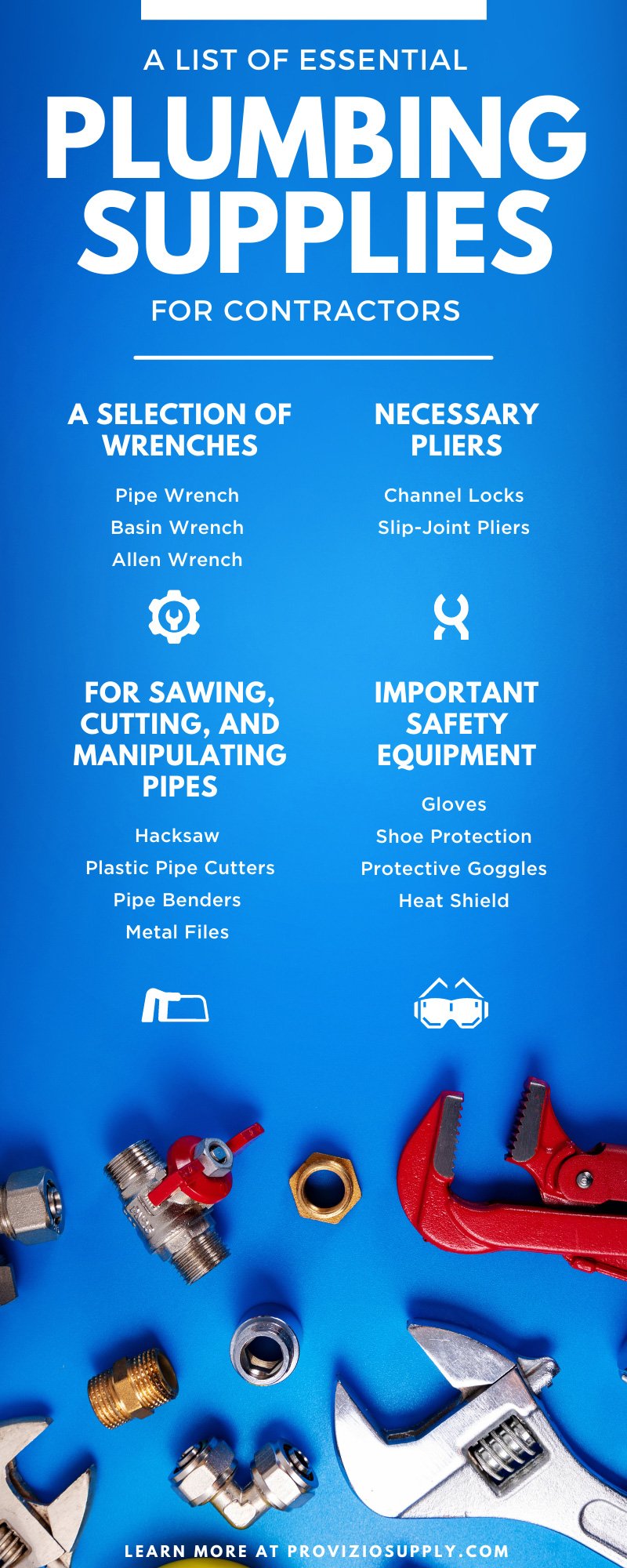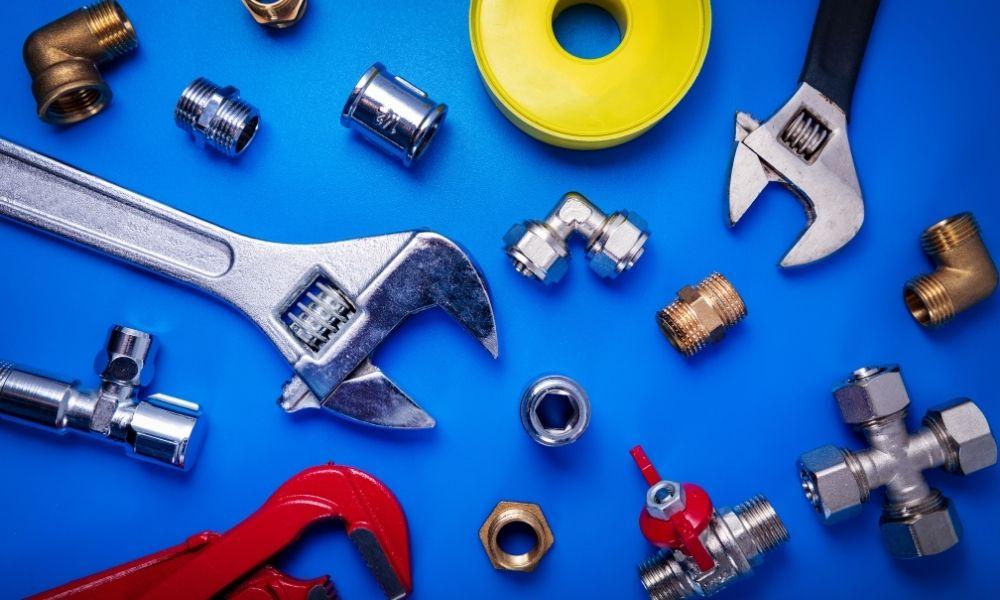Uncategorized
A List of Essential Plumbing Supplies for Contractors
As a plumber, you’re going to face a number of work-related scenarios that you need to be ready and equipped for. This can mean having the right equipment on hand to get the job done or have the tools necessary to protect yourself from infection or injury.
Have a list of essential plumbing supplies for contractors. Double-check to ensure that you have what you need. Coming to a job site unprepared will mean will projects come to a halt. Worst of all, it’ll lead your client to believe your unpreparedness is a sign of unprofessionalism.
A Selection of Wrenches
One of the most ubiquitous tools you will find between all plumbers is wrenches. They come in a variety of shapes, sizes, and applications for both common repairs and specialized uses. A few of the most common wrenches include:
Pipe Wrench
For use in tightening or loosening pipe fittings on heavy-duty fixtures, such as galvanized steel or iron. A pipe wrench, also commonly called a monkey wrench, is adjustable to fit several different-sized pipes but also comes in a number of other sizes for more specialized uses. Because of the heavy-duty nature of the tool, its grip teeth tend to leave marks on the surfaces of smaller pipes after use.
Basin Wrench
Designed to access hard-to-reach spaces, a basin wrench is normally used when servicing faucets. Its specialized T-shape can easily reach behind the basins of sinks to install or remove a valve.
Allen Wrench
Also known as a hex wrench, Allen wrenches are hexagonal-shaped tools meant to drive bolts and screws into sockets typically on plumbing fasteners. Hexagon-shaped screws can come in different sizes, which means it’s necessary to have a large assortment of differently sized Allen wrenches.
Necessary Pliers
Many pliers are primarily used for tightening or loosening nuts and bolts and are used when a wrench is too large to fit in areas.
Channel Locks
These pliers have an adjustable jaw that can be extended or shortened in length depending on the size of the pipe. They are often used in tandem with other pliers. To illustrate, channel lock pliers are generally used to get a grip on a pipe and hold it in place while another set of pliers are used to unscrew a pipe fitting.
Slip-Joint Pliers
Slip-joint pliers are one of the standard tools used in conjunction with channel lock pliers. They are smaller and easier to manipulate while the channel lock holds the large pipe in place. Slip-joint pliers function in much the same way as channel locks as they have an adjustable jaw to service multiple sizes.
For Sawing, Cutting, and Manipulating Pipes
There may be times when a pipe needs to be reshaped and sized on the spot in order to complete a necessary service on a job site. Have some of these tools on hand to make sure the correct adjustments can be made.
Hacksaw
A hacksaw is an important tool when you need to remove an old pipe and its nut, bolts, or screws are too rusted to be taken off by conventional tools. A hacksaw comes with many different blades for separate applications; make sure to have the necessary attachments for quick and safe use. Be careful, though: improper sawblades may result in the blades breaking, resulting in dangerous shards of sharpened metal.
Tube and Plastic Pipe Cutters
These are used in much the same way as hacksaws in that they’re needed in order to remove certain pipes when wrenches don’t suffice. These cutters are typically used on plastic and copper piping. They’re rotated around the pipe to cut it instead of sawing through.
Pipe Benders
Pipes will sometimes need to be bent into new shapes to fit them properly in an area. They may need to be bent around corners or to fit with an already existing pipe.
Metal Files
Whether it’s made out of plastic or metal, after a pipe is cut its new opening will be rough and jagged. You will need to smooth out that area before installation, which is where a metal file will come in handy. Metal files can be used on both plastic and metal pipes.
Important Safety Equipment
Plumbing can present several different safety hazards. These can range from physical injuries due to the use of hacksaws and jagged metal edges or infectious diseases as a result of exposure to unclean water and other unsanitary environments.
Gloves
To protect from cuts, scrapes, and potentially hot surfaces, you will need a pair of gloves to protect your hands. You may also need a separate pair of waterproof gloves when dealing with situations where water is present.
Shoe Protection
One often-neglected aspect is protecting your work shoes from damage. You may need heavy-duty shoe covers to protect your work boots from water damage and other similar hazards. The covers will preserve your shoes for longer as well as prevent infectious water from seeping into your shoes, thus preventing harmful infections.
Protective Goggles
When there are times that you need to solder two pieces of metal together, you need to adequately protect your eyes from the resulting sparks. Invest in sturdy, high-quality goggles to protect yourself from hurting your eyesight.
Heat Shield
When soldering pipes together, you not only have to protect your eyes, but you need to protect the rest of you as well. Metal is an excellent conductor of heat, and when soldering metal pipes their temperatures will rise significantly. Prepare some heat shields and attach them to the metal pipes you’re working on. They will shield you from the heat in case you accidentally touch the super-heated pipe with bare skin.
Show up Prepared
It’s crucial that you show up with the necessary equipment to get the job done. There may be times when unexpected developments occur, and while you may not be able to predict those times, you can preempt them. By having the essential plumbing supplies for contractors, you can fix most problems on the spot, resulting in faster job times and satisfied clients.


